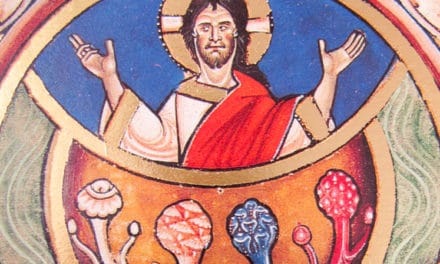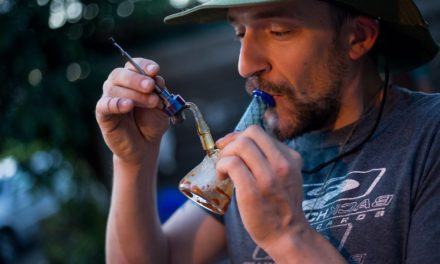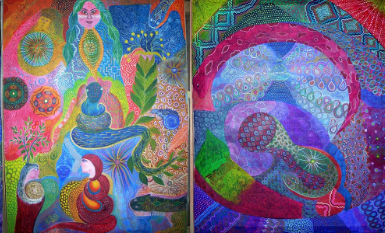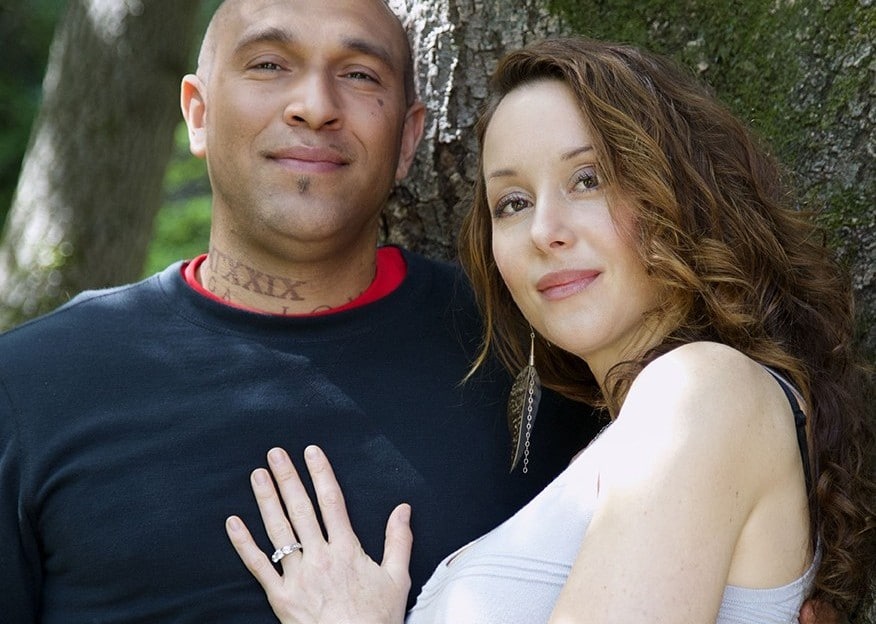Western culture has given rise to many great achievements in the realms of democracy, science, and technology, yet in its shadow lurks epidemics of addiction, depression, and environmental degradation. It’s going to take a massive shift in perspective and behavior to address these profound issues, and entheogenic substances like ayahuasca seem poised to play a major role in that shift. As countless personal reports have testified, appropriate use of these substances can have miraculous transformational effects by easing depression, ending addiction, and deepening our appreciation for nature– benefits which are increasingly backed by scientific research. As exciting and timely as this is for our cultural evolution, we must also take a hard look at how Western fascination with entheogens- such as ayahuasca appropriation- is impacting the tribal societies that carry these medicines, and where we may be getting it wrong in our adoption of their use within our own borders.
Last week we spoke with researcher and health professional Eleonora Molnar about the potential dangers of underground entheogenic use, and this week we continue our conversation around entheogenic/cultural appropriation, harm reduction tips, and the broader interplay between male-dominated western societies and traditional cultures that honor the divine feminine.
I’d like to look at the appropriation aspect a little bit when it comes to entheogens. Is it problematic when Western practitioners selectively appropriate the form and accoutrements of indigenous practices without getting the whole picture? Would it be better for us to develop our own social constructs and paradigm in which to use these substances? Some people might say these medicines belong to the tribe in which they originated, and should only be used exactly as they are used in their places of origin.
I believe that the earth is a living system, what is referred to as the Gaia Theory (by James Lovelock), and that the earth a self-organizing intelligent system that can communicate with us if we listen in a particular way. The earth has presented us with entheogenic plants, and I believe the earth is deliberate about what medicines it provides in certain locales. I believe there’s a larger system that we don’t understand and I’m inclined to think that the medicines that present themselves in my particular bioregion, that are indigenous to this area, are the medicines that the earth has presented to me. So the idea that I would be using ayahuasca here in Roberts Creek, British Columbia when I know that it comes from the Amazon basin in South America is not appropriate for me based on my belief system.
Ideally, I think that we should be using both the medicines and the foods that are from our bioregions. That’s quite an extreme view in this culture, because we live in a globalized capitalist system where if I want to order ayahuasca, iboga, and peyote off the internet, they’ll all show up on my doorstep the next day. Also, bananas, oranges, and avacadoes are all for sale at the local store. It’s so easy to engage with these medicines/foods now, but if we are wanting to respect and repair our natural environment while we heal ourselves, it might be more wise to use medicines/foods that grow in our bioregion.
When you look at the footprint we leave by using medicines that come from elsewhere, there are significant impacts on local economies and ecology. Ayahuasca tourism in the Amazon, for example, has many social costs, with influxes of Westerners, unsustainable harvesting practices, and the changing roles of the people that accommodate the need for foreigners to use this medicine. Then you look at the environmental cost of transporting it, and people taking it to grow it in other locales. Plants may seem to like growing in new areas, but sometimes we can’t predict what might become an invasive plant species. Maybe this plant doesn’t belong there? People often talk energetically about the spirit of the plants helping with the healing when we engage in these ceremonial practices, but I don’t know what it’s like to transport the spirits of those plants to a vastly different bioregion and do ceremonial work with them, I don’t know how those spirits travel. I am talking about very esoteric things, but I’m trying to assess the environmental, social, economic, cultural, and spiritual impacts of our activities.
I have way more questions than I have answers when it comes to all of these things we’re speaking of, but I’d like to engage with people to hear what they think about these things, and about what we can do to collectively heal the earth and heal ourselves. I would never claim to have all the answers!
Those are great points for us to consider. The Western mind is somewhat out of its element when it comes to these subtle realms. We tend to still carry that imperialist approach of taking what we like and discarding the rest.
I feel like the things that we’re talking about have gone on for thousands of years, and it’s nothing new. Here in Canada and also in the United States, there were residential schools for indigenous peoples where a destructive colonial system was imposed. These general trends are still happening now with entheogens like ayahuasca, but they’re in this new age context, and so these issues we’re discussing are sometimes are not given as much attention as they should.
Western culture, with all of its imperialism, colonialism, and even scientific reductionism, carries a strong and imbalanced patriarchal energy. When we interface with these tribal, feminine-energy based cultures, it is an awkward and fumbling relationship at best, and genocidal at worst. Yet despite this friction, I feel like this is a profoundly important moment in time, because people of the West are being drawn deeply to this understanding of interconnection, spiritual healing, and ecological awareness. Looking at the interface that’s happening through entheogens specifically, it seems like it’s really going to be the pivot point where the West is genuinely trying to awaken to what it means to be human, what it means to be part of an ecosystem, and of course it’s being driven by existential and environmental crises- that’s just how humans work.
Yes, crisis facilitates change. There are still so many people who deny that there is any crisis, but the truth is there for anyone to see. I think that the world is shifting, and I’d like to think that entheogens are playing a part in helping people to understand healing, noetic realms, transcendent experiences, and how we as a species could become better at adapting and surviving on this planet. Because really the earth will survive- the earth is strong and intelligent and beautiful and will always be here; it’s us silly humans who need to get it together. I also think that the divine feminine has a major role to play in showing itself and leading the way in change, because male-dominated industrial and militaristic systems continue to pollute the earth and kill life.
Speaking of the divine feminine, let’s bring things down to a practical level and talk about harm reduction for women who are choosing to undergo journeys with these substances. In an underground entheogenic ceremonial context, how are the dangers different for women than they are for men? What advice would you give to women specifically?
That’s a classic question that just goes back to safety for women in our culture in general. However, safety tips are for everyone in general- not just for women. A person could go to a ceremony and not know anyone there, and because we place an inordinate amount of power in the hands of these neo-shamans or guides, we hope they have our best interests at heart at all times, when in fact that might not be the case. This is not to say that all guides have nefarious inclinations or intentions, but some do have predatory tendencies. They may make eye contact with a participant during a ceremony in a flirty way, and the person may be in a highly suggestible non-ordinary state, without his/her faculties to determine what’s going on and how he/she really feels about it. It really transgresses the ethics of the guide to create such a dynamic during the ceremony or anytime after.
There is also inappropriate touching that could happen- sometimes a guide may touch a woman’s breast and say “oh this is just for your healing” and the way that it’s interpreted by the participant can be clouded by the dynamics at play. This can also happen with men and gay “guides”. If a person doesn’t know what they’re getting into and they don’t know the guide and these dynamics, they could easily fall into the age old trap of the false guru, where the “guide” has too much power in their hands and they can take advantage of people.
It is difficult: we have all these guidelines to keep people safe, but there are opportunities for abuses even if the types of things I just mentioned do not take place. So I just want to caution people and ask them to think beforehand what they might be getting into. It’s an absolutist argument to say “Don’t do these things if you don’t want to risk injury,” but it’s kind of like parachuting or other types of thrill seeking, tin that here is a level of inherent risk that needs to be understood and managed. The risks need to be very seriously weighed with the benefits, and I would like to see people doing that kind of weighing more diligently. When people are psychedelically naive and get enchanted with the idyllic stories of others, sometimes that diligence falls off the map and then it can make the journey more difficult.
I also think that it is important to mention that if some kind of abuse does take place, it is not the fault of the person “who didn’t keep themselves safe.” This is akin to victim blaming and it is important to mention that abuse is always the fault of the perpetrator and not the victim.
One last thing I’d like to mention for those who are feeling called to these medicines is to simply be in the presence of the plant by keeping it by your bed, on your desk, or having a living plant in your kitchen. Because these are powerful plant medicines, you can connect with them energetically, rather than by consuming them. I think that this is an often forgotten point- there are many ways to connect with sacred plants.












Ooooh, I love the idea of keeping these sacred plants in our presence. Love love love. Never even thought of that! Great article, as always, Wes. One thing that challenged my mind is the theory about bioavailability within our region and only consuming plants/foods that grow close to home. I’m not sure about that? With that theory, yoga and Buddhism, for example, should have stayed in India? (I know there is a sustainability issue with “real things” and not with practices or spirituality, but still. I think the globe is getting smaller and smaller, and as long as we use these things with great reverence and respect for their origins and people groups, that the plants themselves want to be spread far and wide. 🙂 Just my opinion. And again, with great reverence and respect, and of course, gratitude.